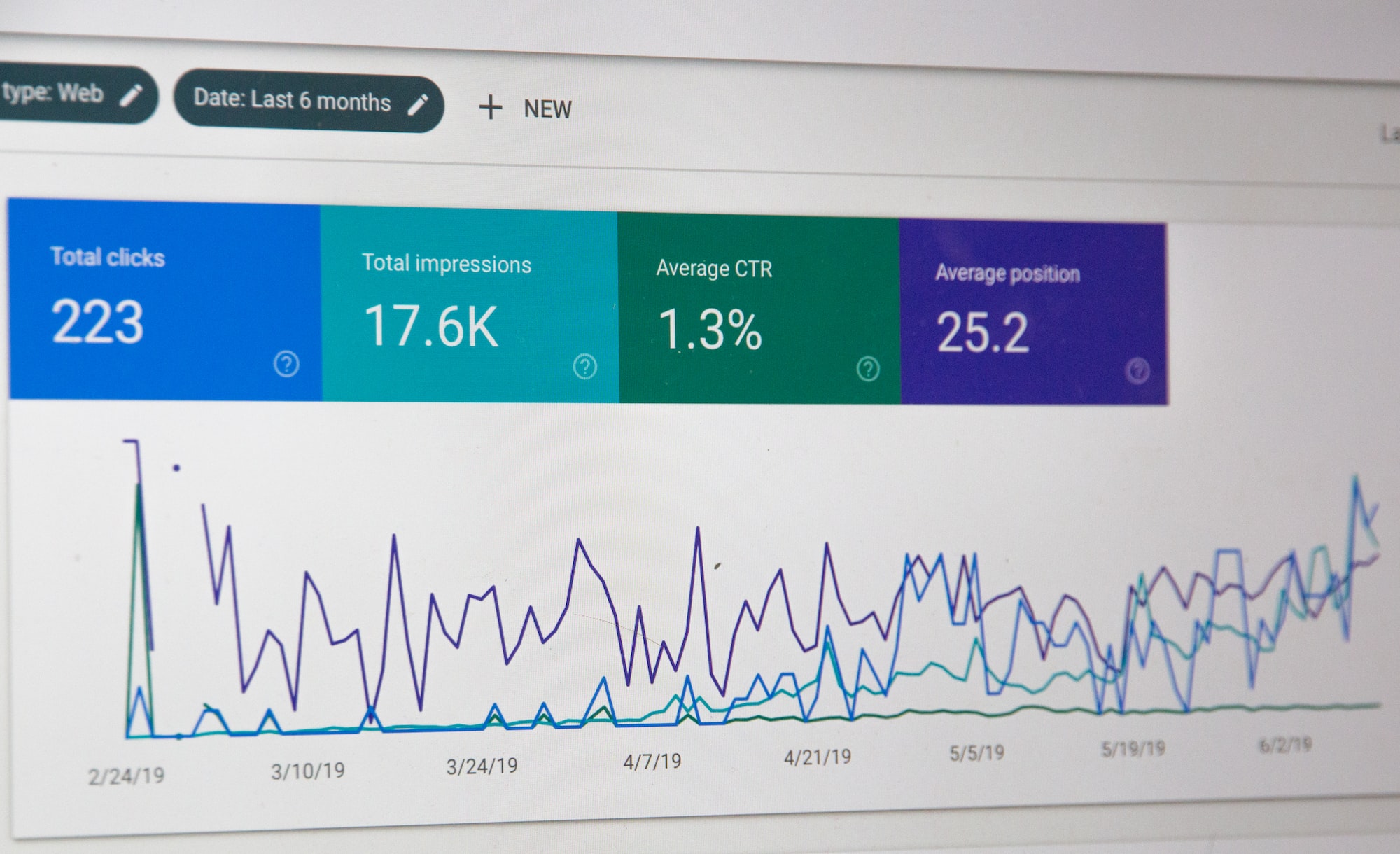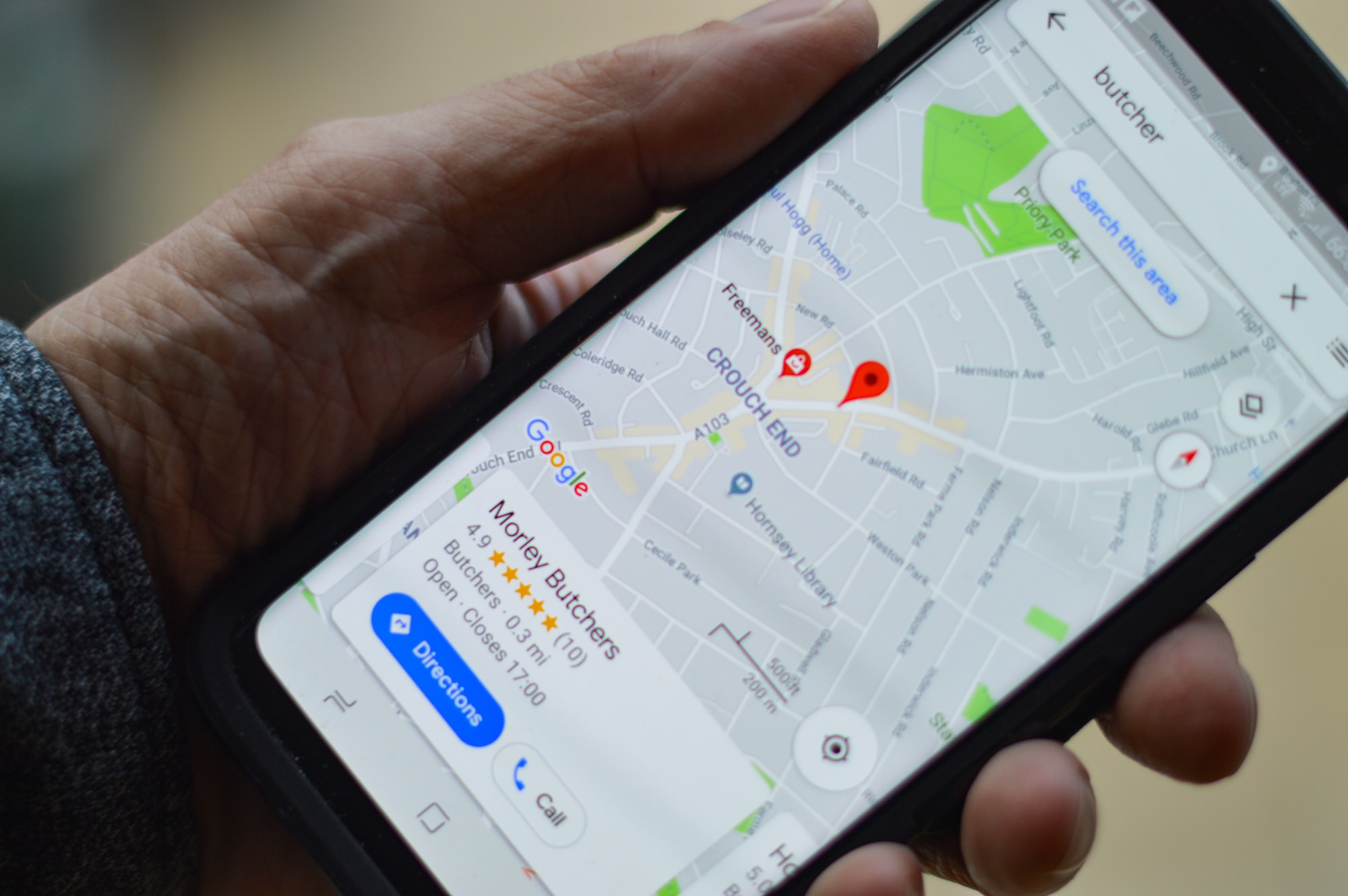Understanding Content Marketing: The Complete Playbook (2023)
Content is a necessary component of any successful digital marketing strategy. Simply put, content marketing is when brands create and distribute valuable, relevant, and consistent content to attract, engage, and retain a clearly defined audience. This guide provides expert content tips, helping you create a comprehensive content plan. We also share effective content strategies for long-term success. Let’s take your content game to the next level.
Content Marketing Basics
Before we dive into specific tips and strategies, it's essential to understand the basic principles of content. So, let's start with a content marketing definition. These principles are the foundation for all successful content campaigns.
First, content is a long-term strategy. It's not a quick fix or a one-time campaign. Instead, it's a consistent effort to provide valuable and relevant information to your target audience over an extended period.
The primary goal of content is twofold: building trust and fostering relationships. By consistently creating and distributing high-quality and valuable content to your target audience, you can establish your brand as an authority in your industry. In turn, your brand builds the consumer trust necessary to attract and retain sales and conversions.
There are many forms that content can take. The most common formats include blog posts, articles, videos, podcasts, infographics, and social media updates. Each format has unique advantages and disadvantages. So you should evaluate, while ultimately choosing formats your target audience regularly engages with.
Overall, content is a powerful tool for building your brand, establishing its authority, and fostering long-term relationships with your target audience. By following the basic principles of content, you can create a sustainable and effective content strategy that delivers actual results over the long term.
Content Tips for Success
Know your audience
Understanding your target audience is crucial for creating pieces of content that resonates with them. Use customer personas to identify their needs, preferences, and pain points.
Create high-quality content
Focus on producing valuable, informative, and engaging content. Quality content will help establish your brand as an authority and build trust with your audience.
Optimize for search engines
SEO optimization is essential to ensure your content reaches your target audience. Incorporate relevant keywords, optimize meta-tags, and create search-friendly URLs.
Promote your content
Use social media, email marketing, and paid advertising to amplify your content's reach and drive traffic to your website.
Measure your results
Use analytics tools to track your content's performance, identify what works best, and refine your strategy.

Effective Content Tactics
With your content plan in place, it's time to explore some effective content strategies. These tacics can help you achieve your goals and establish a solid online presence.
Blogging
Creating regular blog posts on relevant topics can drive organic traffic to your website, improve your search engine rankings, and showcase your expertise. Companies that consistently blog marketing content see higher traffic.
Video marketing
Video content can capture your audience's attention and drive brand awareness. Use platforms like YouTube, Vimeo, and social media channels to share your videos.
Podcasting
Launching a podcast can help you reach a new audience and establish your brand as an authority in your industry. Share your podcast episodes on popular platforms like Apple, Spotify, and Google.
Social media marketing
Use platforms like Facebook, Twitter, LinkedIn, and Instagram to share your content and engage with your audience. Tailor your content to each platform's unique features and audience preferences.
Influencer marketing
Partner with influencers in your industry to amplify your content's reach and credibility. Influencers can share your content with their followers, expanding your audience and driving traffic to your website.
Email marketing
Build an email list and share your content through regular newsletters. Email marketing is an effective way to nurture leads, drive conversions, and maintain relationships with your audience.
Guest posting
Contribute articles to reputable websites and blogs in your industry. Guest posting can help you reach a larger audience, build backlinks, and establish your brand as a thought leader.
White papers
Publish longform white papers that cover industry topics in depth; this typically includes stats, diagrams, and infographics. White papers are often used as an opportunity to generate leads and, ultimately, business.
Creating a Content Marketing Plan
A content marketing plan is a roadmap for your efforts, helping you stay focused and on track. Here are the essential steps for creating a successful content plan.
Set clear goals
Define what you want to achieve with your content efforts. Common goals include increasing brand awareness, generating leads, and driving sales.
Identify your target audience
Develop detailed customer personas representing your ideal audience. Include demographic information, interests, behaviors, media consumption habits, preferences, and pain points.
Conduct a content audit
Evaluate your existing marketing content to identify gaps, strengths, and areas for improvement. We'll touch on the value of repurposing content in a bit.
Create a content calendar
Plan your content and create a schedule to ensure consistency and timely delivery. Consistency is one of the primary factors in driving sustainable organic growth – and it's one of the most tedious.
Allocate resources
Determine the budget, personnel, and tools needed to execute your content plan effectively. Don't skip on resources. Your content is a reflection of your brand. Whether it be time or money (or both), go the extra mile to deliver a consumer-appealing content product.
Define your distribution channels
Identify the platforms where your target audience is most active and plan your content distribution accordingly. Hone in on your target audiences media consumption habits and where they consume media. With the impending death of the cookie, contextual targeting – or finding your audience based on the relevancy of a channel versus collected data – is more important than ever.
Developing a Winning Content Strategy
Align your strategy with your goals
Ensure your content efforts support your business objectives. For example, if your goal is to generate leads, create content that addresses your audience's pain points and offers solutions. Choose the type of content marketing that most suits your goals and appeals to your customers.
Develop a consistent brand voice
Establish a unique and consistent tone that reflects your brand's personality. Consistency helps build brand recognition and trust among your audience.
Create diverse content
Experiment with different content formats and topics to keep your audience engaged and interested. Use analytics to identify the types of content that resonate most with your audience and prioritize those.
Engage your audience
Encourage your audience to comment, share, and interact with your content. Respond to comments and questions promptly to foster a sense of community and show your audience that you value their input.
Monitor and adjust your strategy
Track your content's performance using analytics tools. Then, use these insights to refine your strategy, improve your content, and optimize your distribution efforts to amplify your results and success.

Analytics and Optimization
Understanding the performance of your content is crucial for optimizing your content efforts. Here are some key points to consider when focusing on analytics and optimization.
Set KPIs (Key Performance Indicators)
Establish the metrics that align with your content goals. Common KPIs include web traffic, engagement rate, conversion rate, and social shares.
Use analytics tools
Utilize tools like Google Analytics, SEMrush, and Moz to monitor your content's organic search performance, analyze user search behaviors, and identify search trends to capture. More on this below.
Optimize your content
Regularly update your marketing content to ensure it remains relevant and SEO-friendly. Make use of on-page and off-page optimization techniques to improve your search rankings. Become best friends with Google's PageSpeed Insights.

Understanding Content and SEO
Content and search engine optimization (SEO) are closely intertwined. Here are some critical considerations for incorporating SEO into your content program.
Conduct keyword research
Identify the keywords and phrases your target audience uses to search for information related to your products or services. Consider long-tail keywords, which are hyper-specific search queries. When a user uses a long-tail keyword, they're typically looking for a specific answer.
Use keywords strategically
Incorporate keywords in your content, including titles, headings, and body copy, while avoiding keyword stuffing or spammy tactics. Use tools like SEMRush's on-page SEO diagnostics tool to make sure you've optimized your page(s) against your competitors, and that you're not running afoul of the almighty Google algorithm.
Look into on-page factors
Make sure your content is optimized for on-page factors like meta descriptions, image alt tags, and internal linking. These little things add up and can have a major impact on your discoverability – not only on search, but on social as well. And, don't skip the ALT text!
Build high-quality backlinks
Earn backlinks from authoritative websites by creating valuable and shareable content to which others want to link. This process takes time, so do it in earnest and have fun with it. Steer clear of buying backlinks, the system is too big to be manipulated. Plus, content should be about value and information. If you offer that, the backlinks will come.

Content and Crisis Management
Effective content can also be used to manage crises and negative publicity. Here are some tips for using content in crisis management.
Respond quickly
Monitor your social media channels and promptly respond to negative comments or feedback to address issues before they escalate. Time is of the essence; we all know how fast the internet travels.
Create transparent and honest content
Address issues head-on and provide transparent and honest content that demonstrates your commitment to resolving problems. Authenticity always wins the day.
Empower your team to respond
Ensure your team is equipped with the tools and resources needed to respond to negative feedback or reviews promptly and effectively. This is where social listening comes in (back to that in a bit).
Leverage positive content
Use positive customer reviews, testimonials, and case studies to counter negative feedback and rebuild trust with your audience. Remember, positive sentiment is brand equity; don't be afraid to cash in on it when you need to.

Testing
Testing is essential for identifying the most effective content tactics. Here's how to approach testing in your content strategy.
Establish a testing framework
Determine the aspects of your content you want to test and develop a structured approach to evaluate their performance. Consider different testing methods and frameworks. For instance, you may want to test users organically exposed to your brand messaging. Or, you may want to simulate a ideal target sample through panels to get a more tailored snapshot of your content's effectiveness.
Test content formats
Experiment with various pieces of content and content types, such as articles, videos, and infographics, to identify the formats that drive the highest engagement and conversions. Bridge messaging across different formats so your audience can engage with familiar messaging in different and novel ways.
Test distribution channels
Evaluate the effectiveness of different platforms, like social media, email marketing, and guest posting, to determine the best channels for content distribution. Make sure your channel mix is diverse and reflective of the audiences you're trying to engage and capture as leads, sales, or conversions.
Analyze test results
Use the data gathered from your tests to make informed decisions and refine your content strategy. Never stop refining.

Audience Analysis and Strategy
Understanding your audience is vital to creating content that resonates with them. Here's how to conduct audience analysis and develop a targeted content strategy.
Create customer personas
Develop detailed profiles of your target audience based on demographic, psychographic, and behavioral data. Continue to learn more about your audience, and keep track of their interests, behaviors and preferences as they evolve. That way you're able to refine your strategy.
Analyze customer feedback
Collect feedback through surveys, reviews, and social media to better understand your audience's preferences and pain points. First-party insights can help brands foster true, authentic relationships with their consumers. But, be earnest abut the feedback – and take action.
Tailor content to your audience
Use the insights gained from your audience analysis to create personalized, relevant, and engaging marketing content. In the post-cookie era, hyper-personalization is critical to successful audience targeting.
Social Sentiment and Listening
Social sentiment and listening involve monitoring online conversations and understanding how your audience feels about your brand and content. Here's how to approach this aspect of content marketing.
Use social listening tools
Tools like Hootsuite, Mention, and Brandwatch can help you track online conversations, mentions, and sentiments around your brand. Stay abreast of the conversation, and don't be afraid to start a conversation too.
Respond to feedback
Engage with your audience by addressing their concerns, answering their questions, and acknowledging their feedback.
Monitor sentiment trends
Identify trends in sentiment and use these insights to inform your content strategy and messaging.
Leverage user-generated content (UGC)
Encourage your audience to share their experiences with your brand and incorporate their content into your efforts. Your consumers can be surrogates for your brand's messaging and products.

Social Sharing and Organic Growth
Encouraging social sharing and driving organic growth are essential for maximizing your content's reach and impact. Here are some strategies to consider.
Make sharing easy
Include social sharing buttons on your website and blog to encourage your audience to share your content.
Create shareable content
Develop informative, engaging, and visually appealing content to encourage sharing and drive organic growth.
Leverage social media influencers
Partner with influencers in your industry to amplify your content's reach and increase the likelihood of it being shared.
Encourage user-generated content
Invite your audience to create and share their own content related to your brand, fostering a sense of community and driving organic growth.
Engage with your audience on social media
Be active on social media platforms and interact with your audience by responding to comments, sharing user-generated content, and participating in conversations.
Optimize content for search engines
Ensure your content is SEO-friendly, making it more likely to be discovered and shared organically by your target audience.

Content Repurposing and Recycling
Maximize the value of your content by repurposing and recycling existing content into new formats and platforms.
Transform blog posts into videos or podcasts
Reach new audiences by adapting your written content for different platforms and formats.
Create infographics from data-driven content
Visualize data and statistics from your existing content to create shareable infographics.
Update and refresh evergreen content
Keep your evergreen content relevant and up-to-date by updating information, adding new insights, and republishing with a current date.
Compile related content into e-books or guides
Combine several blog posts or articles on similar topics to create comprehensive resources for your audience.

Content Curation
Curating high-quality content from external sources can supplement your original content and provide additional value to your audience.
Share industry news and articles
Keep your audience informed about relevant industry news and trends by sharing articles from reputable sources.
Leverage content from influencers
Share content created by influencers in your industry to provide diverse perspectives and insights.
Create round-up posts
Compile lists of top articles, resources, or tools related to your niche to offer your audience a one-stop resource.
Always credit the source
When curating content, attribute the content to its original creator and provide proper links.

Local Content
If your business has a local focus, consider incorporating local content strategies to target your specific region.
Create locally relevant content
Produce content that addresses your local audience's needs, interests, and concerns.
Optimize content for local search
Incorporate local keywords, geographical information, and contact details to improve your local search visibility.
Engage with local influencers and partners
Collaborate with local influencers, businesses, and organizations to expand your reach within your community.
Participate in local events
Sponsor or attend local events, and create content around your involvement to generate local interest and engagement.

User Experience and Content Marketing
A positive user experience (UX) is crucial for the success of your content efforts.
Ensure responsive design
Ensure your website and content are optimized for mobile devices, tablets, and various screen sizes.
Improve site speed
Optimize your website's loading time to reduce bounce rates and enhance user engagement.
Simplify website navigation
Organize your content and structure to make it easy for users to find what they want.
Use clear calls-to-action (CTAs)
Guide your audience toward desired actions with clear and compelling CTAs within your content.

Legal and Ethical Considerations
Adhering to legal and ethical guidelines is essential for maintaining your brand's reputation and avoiding potential issues:
Comply with copyright laws
Always respect copyright and intellectual property rights when creating or curating content.
Follow advertising regulations
Be transparent about sponsored content or partnerships and follow the guidelines set by the Federal Trade Commission (FTC) and other regulatory bodies.
Respect user privacy
Be mindful of data privacy regulations like GDPR and CCPA when collecting and processing personal information from your audience.
Prioritize accessibility
Ensure your content is accessible to users with disabilities by following web accessibility guidelines and best practices.

Content Marketing Channels
Creating great content is only half the battle; you also need to promote and amplify it to reach your target audience. In terms of marketing your content, here are just a few options.
Use paid advertising
Consider using paid advertising platforms like Google Ads, Facebook Ads, or LinkedIn Ads to increase your content's visibility and reach.
Share on social media
Share your content on your social media profiles and encourage your followers to engage with and share it.
Leverage email marketing
Share your content with your email list and include social sharing buttons to encourage further distribution.
Participate in online communities
Share your content on relevant online communities like Reddit, Quora, or niche forums to reach new audiences.
Collaborate with other brands
Partner with other brands or businesses to create mutually beneficial marketing content and expand your reach.

Visual Content
Visual content is a powerful tool for attracting and engaging your audience:
Use high-quality images
Incorporate photos that capture your brand's personality and values to enhance your content's visual appeal.
Use videos
Create engaging video content that tells a story, offers insights, or showcases your products or services.
Use infographics
Use infographics to present complex information in a visually appealing and easily digestible way.
Use GIFs and memes
Incorporate GIFs and memes into your content to add humor and personality and resonate with your audience.

Interactive Content
Interactive content allows your audience to engage with and participate in your content:
Use quizzes and assessments
Create quizzes and assessments that provide valuable insights or entertainment for your audience.
Use polls and surveys
Collect feedback and insights from your audience by creating polls and surveys that encourage participation.
Use interactive videos
Create interactive videos that allow your audience to choose their own adventure or select the outcome of a scenario.
Use interactive calculators
Create interactive calculators that provide personalized information or solve a specific problem for your audience.
AR and VR
Consider augmented reality (AR) and virtual reality (VR) as novel and exciting content formats to try as well.

Content and Sales Alignment
Content marketing benefits businesses. Aligning your b2b content marketing efforts with your sales goals can help you drive revenue and growth:
Create content for each sales funnel stage
Develop content, like articles and white papers, that addresses your audience's needs and interests at each step, from awareness to decision-making.
Use content to educate and inform
Use different pieces of content, such as video and animation, to educate your audience about your products or services and provide valuable information that supports their decision-making process.
Nurture leads with targeted content
Use targeted content to nurture leads and move them further down the sales funnel. Gate more informative content to capture leads in exchange for your company's insight and perspectives.
Measure and optimize for sales impact:
Track the influence of your content on sales and optimize your strategy accordingly.

Content and Customer Experience
Providing a positive customer experience is critical to retaining customers and driving loyalty:
Use content to support customer success
Create and market content that helps your customers get the most out of your products or services and addresses common pain points.
Personalize content for each customer
Use data and insights to personalize your content to each customer's needs and preferences.
Use content to build relationships
Use content to build relationships with your customers by offering value, sharing stories, and fostering engagement.
Use feedback to improve the customer experience
Collect customer feedback and use it to improve your products, services, and content strategy.
Final Thoughts
Understanding content marketing has become essential for businesses looking to reach and engage their target audience. And a successful content strategy requires careful planning, execution, and optimization across various platforms and formats.
Incorporating various elements of content will enable you to create a well-rounded and effective approach to cater to your audience's diverse needs and preferences. First, a successful content srategy requires a deep understanding of your target audience, their needs and preferences, and how your content can add value to their lives. Then, you can create content that resonates with your audience by implementing the tips and strategies outlined in this guide.
Creating a successful content program requires patience, experimentation, and persistence. Don't be afraid to try new formats, platforms, or messaging. And don't be discouraged if your initial efforts don't yield immediate results. By consistently producing high-quality, valuable content that resonates with your target audience, you can build a loyal following that will help your brand thrive for years.
